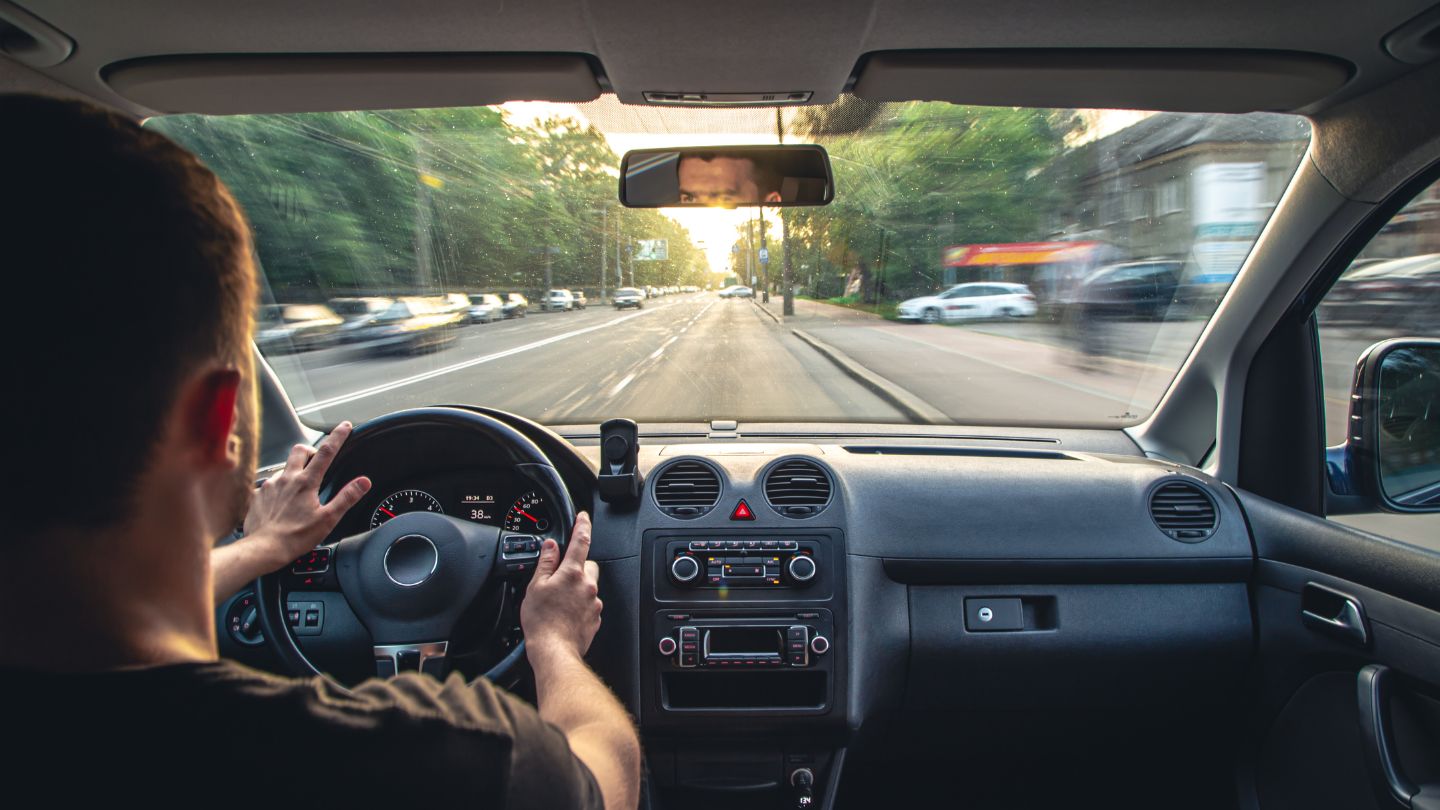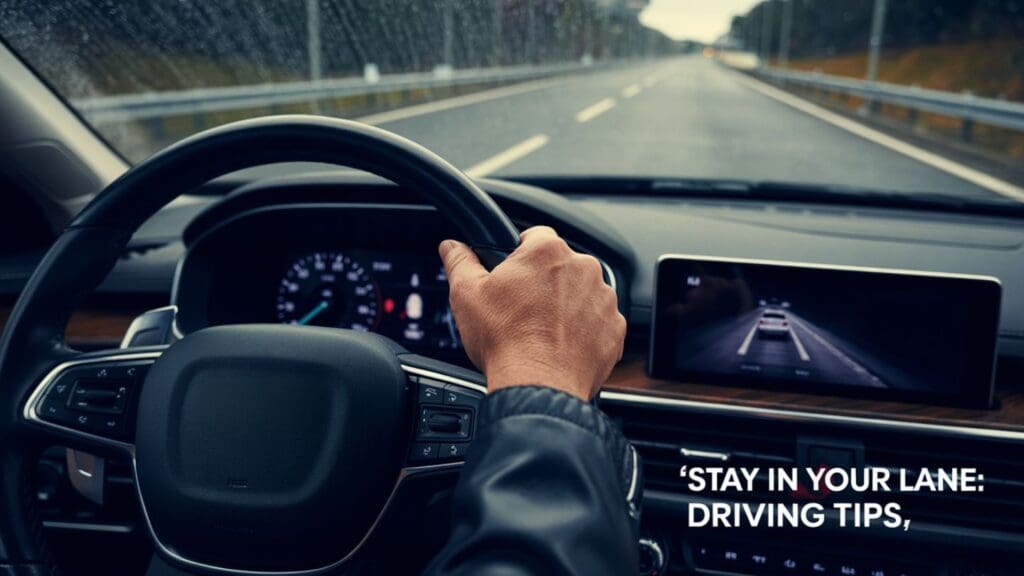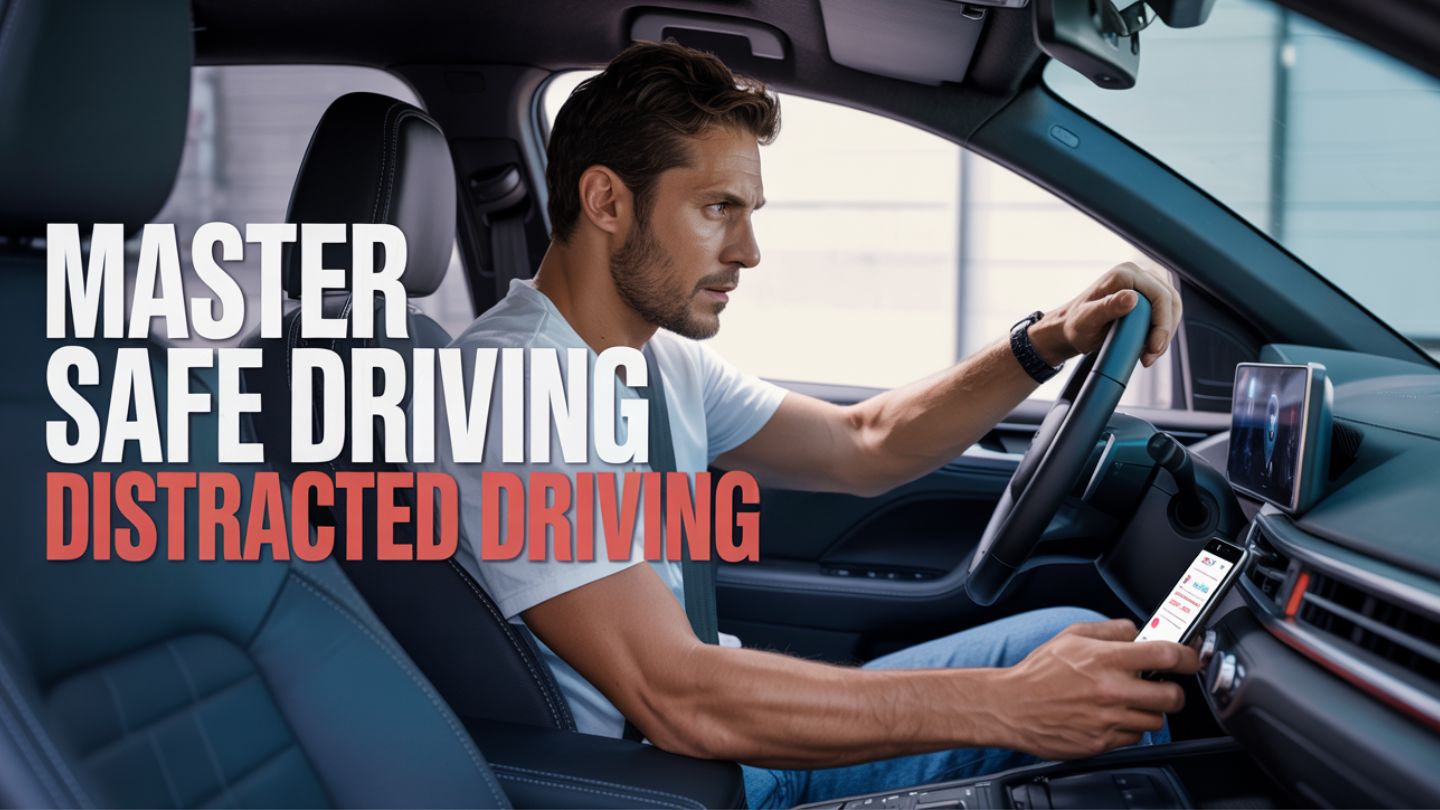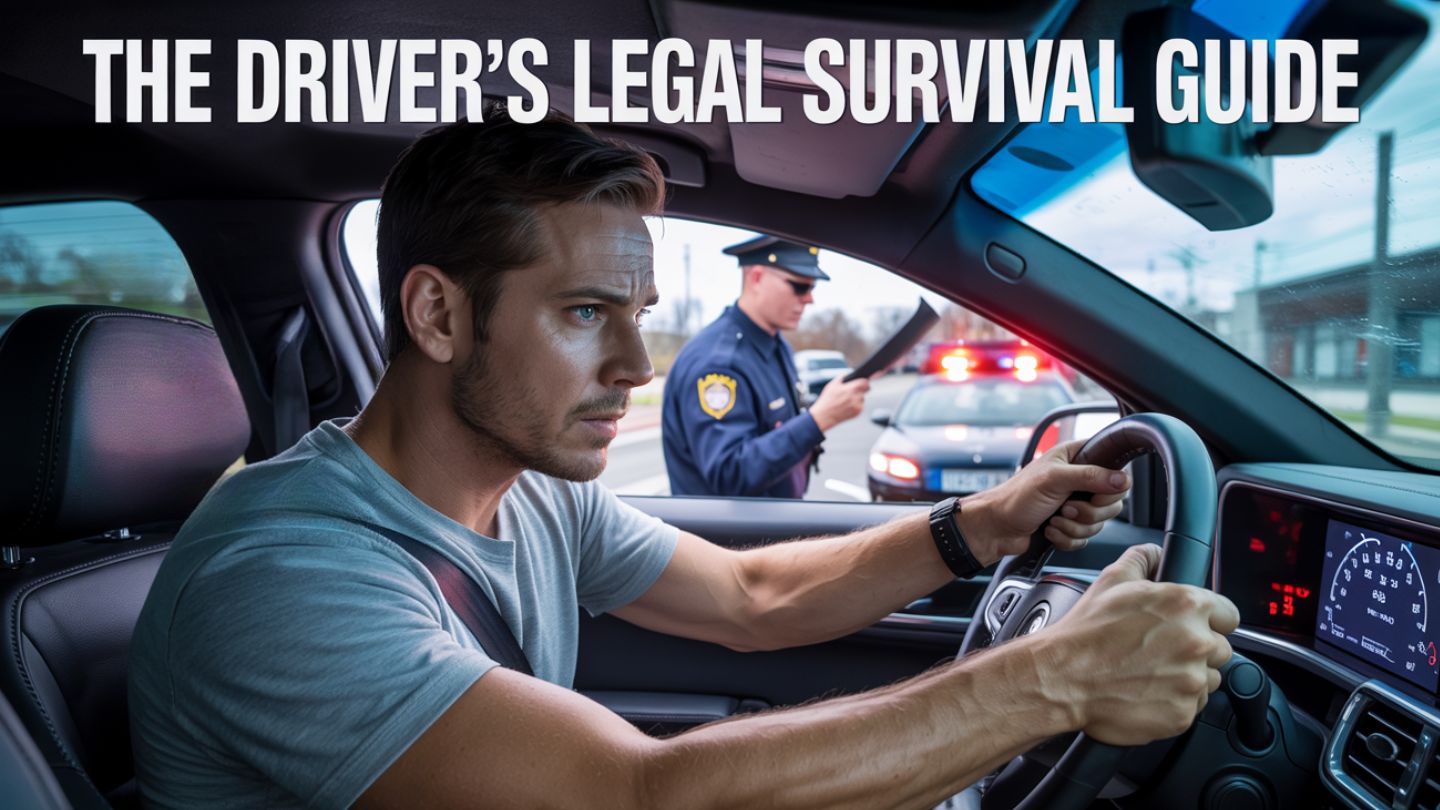Lane discipline is one of the most fundamental aspects of safe driving, yet it’s frequently taken for granted. Drifting between lanes or failing to stay centered can increase accident risks and create hazards for other drivers. Practicing awareness and consistency helps maintain smoother traffic flow and safer roads. Small adjustments in driving behavior make a big difference. In this blog, we’ll explore underrated tips that reinforce the importance of staying in your lane.
Key Takeaways
- Staying in your lane is essential for safe driving, preventing accidents, and ensuring predictable behavior on the road.
- Proper lane positioning and effective use of mirrors are crucial for maintaining awareness and avoiding blind spots while driving.
- Practicing good driving habits, such as smooth steering, early signaling, and avoiding distractions, significantly enhances road safety.
The Importance of Staying in Your Lane

Staying in your lane is a fundamental aspect of safe driving. Lane discipline ensures predictable behavior, which is crucial for reducing accidents and improving traffic flow. Proper lane position minimizes the risk of sideswipes, near hits, and road tension.
Improper lane changes or drifting can lead to life-threatening situations for both the driver and others on the road. Maintaining lane discipline fosters a safer driving environment for everyone.
Maintain Proper Lane Positioning

Keeping your vehicle centered in the lane is crucial for safe driving. Regularly checking both left and right lines in your mirrors helps maintain proper lane positioning. Directing your attention to the center of the lane promotes better control and safety.
Focusing on distant landmarks helps assess your vehicle’s position. This method helps you understand your relation to the lane markings and stay centered, avoiding drifting. Using reference points on your vehicle, such as the hood or side mirrors, aids in maintaining lane position.
Properly adjusted mirrors are crucial for maintaining lane positioning and visibility. Avoiding distractions, like eating or using your phone, helps prevent lane drifting and keeps you centered.
Read more: Top Tips on How to Prevent Distracted Driving
Use Mirrors Effectively
Properly adjusting your rearview and side mirrors enhances visibility and reduces blind spots. Adjust mirrors before driving to ensure optimal viewing angles. Regular mirror checks help assess the presence of vehicles around you and maintain lane awareness.
Check your side mirrors every 5-8 minutes while driving. Periodic checks enhance situational awareness, crucial for safe driving. Effective mirror use significantly contributes to overall road awareness and safe lane changes.
Focus on the Road Ahead

Looking further ahead helps anticipate changes in traffic and road conditions. Focusing ahead directs steering towards a specific point, allowing for more accurate lane positioning. Aiming high in steering facilitates gradual adjustments and reduces the risk of overcorrection. Head direction aiming high in steering facilitates gradual adjustments and reduces the risk of overcorrection. Staying alert during low-visibility hours is equally important, and following top safety tips for driving at night can greatly reduce risks while maintaining proper lane control.
Avoid focusing too much on the vehicle in front to prevent misalignment. Occasionally glance at:
- Road edges
- Lane markings
- Curbs
- Signage
This balanced focus helps predict hazards, maintain proper lane positioning, and enhance driving safety.
Smooth Steering Techniques
Smooth steering techniques are crucial for effective lane control. Gradual steering adjustments minimize abrupt vehicle movements. Gentle, gradual steering adjustments enhance vehicle control.
Proper right-hand positioning:
- Enhances control and reduces muscle memory fatigue.
- A relaxed grip improves feedback and responsiveness from the steering system.
- Small corrections prevent oversteering and improve overall vehicle handling with one hand, ensuring correct positioning.
Signal Early When Changing Lanes
Early signaling allows other drivers to anticipate your lane change and adjust their speed. Key components for safe lane changes include signaling, scanning the road, and maintaining steady steering.
Besides signaling, check mirrors before changing lanes to ensure there are no blind spots. Awareness of surrounding traffic while signaling helps prevent collisions and promotes road safety.
Avoid Distractions
Turning off or placing your phone out of reach prevents distractions from calls or messages. For tasks requiring attention, pull off the road and stop in a secure location.
Setting your seat and mirrors before driving minimizes distractions. Eat meals before or after driving to avoid messy foods that could interfere with vehicle control. Reviewing the top tips on how to prevent distracted driving can help reinforce good habits and ensure lane discipline isn’t compromised by avoidable mistakes.
Practice in Controlled Environments
Parking lots offer a safe space to develop lane centering skills. Practicing lane discipline in quiet streets or parking lots reinforces proper behaviors. Repeated practice leads to more consistent driving habits. Parking lots are effective environments for gaining lane centering experience.
Understanding vehicle dimensions is necessary for mastering steering adjustments. Trial and error, like softly hitting curbs, provides immediate feedback about the vehicle’s proximity to lane edges. Using parking lot lines effectively practices lane positioning.
Adjust for Different Scenarios
In urban areas, maintaining a centered lane position helps avoid accidents caused by hugging the lines. Most people find that matching speed to traffic flow enhances lane discipline and reduces collision risks, creating a safe driving habit while keeping a safe distance. Drivers should also consider how the weather affects defensive driving, since rain, fog, or icy conditions can make lane discipline even more critical for safety. Additionally, driving at a slow speed can further improve safety and boost confidence.
Driving guidelines for highways and country roads:
- On highways, stay in the right or middle lane except when overtaking slower vehicles.
- Be aware of large trucks’ blind spots for safe lane changes and passing on highways.
- Adjust lane positioning on country roads, especially around curves or blind corners.
Consistent Speed Within Your Lane
A steady speed enhances road safety by:
- Improving traffic flow.
- Reducing the likelihood of accidents caused by sudden lane changes.
- Maintaining safer following distances at higher speeds.
- Making merges more manageable.
Lane violations significantly contribute to crashes, with many drivers linked to unsafe lane changes.
Understanding Lane Splitting Laws
Car drivers should be aware of the real risks of texting and driving:
- Avoid drifting into areas used for legal lane splitting to prevent accidents with motorcyclists.
- Stay within lane boundaries to ensure legal compliance.
- Minimize the risk of collisions with splitting motorcycles by maintaining proper lane discipline.
Lane splitting allows motorcyclists to ride between lanes, enhancing safety by reducing the risk of rear-end collisions. Lane splitting is legal in some states; understanding these laws helps motorcyclists navigate traffic safely.
Monitor Tire Pressure
Equal tire pressure ensures vehicle stability and control, helping you stay centered in your lane. Check your tire pressure before hitting the road when the tires are cold for accurate readings.
Stay Calm During Emergencies
In emergencies, maintain a firm grip on the steering wheel to retain control and avoid overreactions. If control is frequently lost due to distractions like sneezing, consider avoiding driving.
In emergencies where control is lost, remember the following:
- Avoid hesitation, as it can lead to sharper reactions.
- Remain composed and avoid sudden movements.
- Make gradual steering adjustments during a tire blowout to help keep your vehicle on course and minimize risk.
Reflection and Feedback
Dash-cams allow drivers to review their driving habits and identify areas for improvement. Dash-cams improve driver well-being by monitoring performance and identifying stressors to drive better.
Video feedback from dash-cams helps drivers understand their habits and encourages better driving techniques. Mental check-ins sharpen awareness and help drivers reflect on their driving behavior. Both dash-cams and mental reflections are effective tools for improving lane discipline.
Read more: Master Safe Driving: What Are the 5 Rules of Defensive Driving?
Strengthening Road Safety Through Lane Discipline
Maintaining proper lane discipline is more than just a driving rule; it’s a critical habit that prevents collisions, ensures smoother traffic flow, and promotes overall road safety. By staying attentive, respecting lane boundaries, and making thoughtful adjustments, drivers can significantly reduce risks and create safer conditions for everyone on the road.
At Court Approved Defensive Driving, we focus on building awareness and improving skills that make a real difference in daily driving. Enrolling in a driving safety course in Houston can help you sharpen your judgment, strengthen safe habits, and stay better prepared for every situation. Visit us to take the next step toward safer driving.
Frequently Asked Questions
How long does a Texas Defensive Driving Class typically last?
A Texas Defensive Driving Class typically lasts six hours, providing essential skills for safe driving.
How often can you take a defensive driving course for ticket dismissal in Texas?
In Texas, you can take a defensive driving course for ticket dismissal once every 12 months. Ensure you adhere to this timeframe to maximize your options for ticket dismissal.
How many modules are in the defensive driving course in Texas?
The defensive driving course in Texas typically consists of six to twelve modules, depending on the specific program you choose.
Is it mandatory to take a state-approved defensive driving course for ticket dismissal in Texas?
Yes, it is generally mandatory to complete a state-approved defensive driving course for ticket dismissal in Texas, as mandated by the courts.



